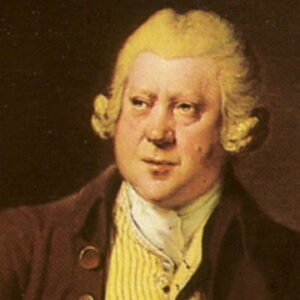Sir Richard Arkwright, dubbed “the Father of the Industrial Revolution,” was an 18th-century English inventor and manufacturer. He was a successful businessman who is credited with inventing the modern factory system, which allowed for the mass production of standardized components at a low cost. He devised the spinning frame and the rotary carding machine that turned raw cotton into cotton lap, and he was a very inventive inventor. His development of the modern manufacturing system, on the other hand, made his name indelible in history. He grew raised in poverty as the youngest child in a large family. Richard’s tailor father was so poor that he couldn’t afford to send him to school. He apprenticed with a hairdresser and began working as a wig manufacturer after learning to read and write from a cousin. He met numerous weavers and spinners during his wig-making work and finally went into the textile business. He became a successful businessman and invented a technology for mass-producing yarn that dramatically increased the efficiency and profitability of the manufacturing process. He built textile mills in numerous locations during the course of his life and died a very wealthy man.
Childhood and Adolescence
Richard Arkwright was born on December 23, 1732, in Preston, Lancashire, England. His father, Thomas, was a tailor and a burgess of the Preston Guild, and his mother was Sarah. Richard was the youngest of a family of thirteen children.
His family was poor, and his parents couldn’t afford to send him to school, so he taught himself to read and write from a relative.
He was apprenticed to a barber in a neighbouring town as a young guy.
Career of Richard Arkwright
He started working as a barber and wig manufacturer. He was a bright and hardworking young man who opened his own shop in Bolton’s Churchgate in the early 1750s.
He devised a waterproof dye for use on a type of trendy wig known as ‘periwigs’ because he was gifted with a creative mind. He grew his business over time and traveled throughout the country purchasing human hair for use in the production of wigs.
As a wig maker, he came into contact with weavers and spinners, and when the market for his wigs began to dwindle, he decided to go into the textile business.
In the 1760s, he developed an interest in spinning machines and built his first machine, a mechanical device for spinning cotton thread. He worked on the spinning machine with a clockmaker, John Kay, and eventually patented the spinning frame in 1769.
Despite the fact that he invented the spinning frame, there were still various issues with the spinning process that needed to be addressed. To be commercially feasible, the raw cotton had to be prepared by hand, and the spinning frame had to be made appropriate for widespread usage.
Lewis Paul had constructed a carding machine in 1748, and Arkwright began improving it. In 1775, he invented a new carding engine that transformed raw cotton buds into a continuous skein of cotton fibers that could later be spun into yarn, and he received a patent for it.
He needed additional money to put his innovation into practice, so he teamed up with wealthy hosiery producers Jedediah Strutt and Samuel Need, who were willing to try new things. In 1771, the three men collaborated to construct the world’s first water-powered mill at Cromford.
He increased his investment in his equipment and automated all of the pre-spinning and spinning operations. He eventually developed mills in which a single machine could handle the entire yarn manufacturing process. This, combined with labor division, considerably increased the efficiency of the manufacturing process.
His inventions and entrepreneurial skills aided in the entire mechanization of the thread manufacturing process, allowing all of the operations to be coordinated and completed under one roof. This was the forerunner of what would become known as the “factory system.”
He created factories in Derbyshire, Staffordshire, Lancashire, and Scotland and became a highly wealthy businessman. He was a brash businessman that was difficult to work with. He was also infamous for his callous treatment of his manufacturing workers.
Major Projects of Richard Arkwright
‘The Father of the Industrial Revolution,’ as Richard Arkwright is called. He is credited with inventing a mass-production process that not only enhanced machine efficiency, but also standardized items, allowing businesses to generate more profits.
Achievements & Awards
In 1786, Richard Arkwright was knighted for his accomplishments.
Personal History and Legacy
He married Patience Holt in 1755, and they had a son the following year. His wife, unfortunately, died in 1756.
In 1761, he married Margaret Biggins, who he had met a few years before. They had three children, but only one of them grew up.
At the age of 59, he died on August 3, 1792. At the time of his death, he was a wealthy man having factories in Derbyshire, Staffordshire, Lancashire, and Scotland, as well as a fortune of £500,000.
Estimated Net Worth
The estimated net worth of Richard Arkwright is unknown.


